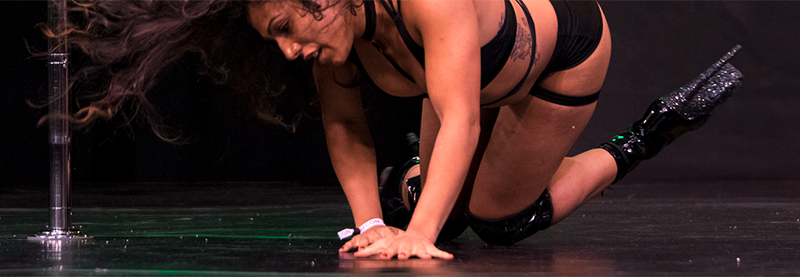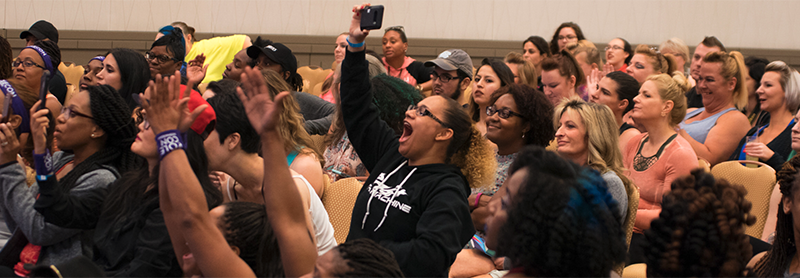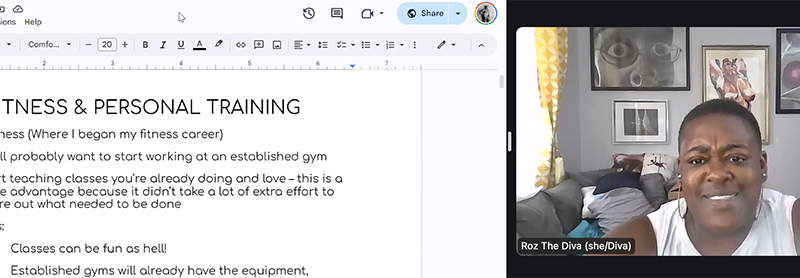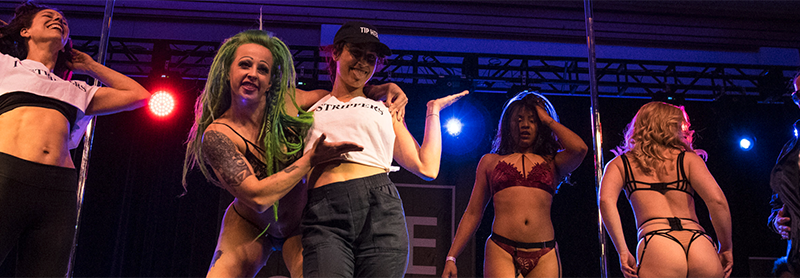[memberonly level=“Group Membership for Businesses of 2-5 individuals, Student, Individual or Solo-Preneur”] Please note that…

How to pick the best flooring for your pole studio
Picking the best flooring for your pole studio can be a challenge. We want it to be slidey but not too slippery, firm but not too hard, easy to keep clean, and, of course, reflective of our overall studio vibe. That’s a tall order – whew!
Ask these questions before choosing a floor
Before choosing a floor, you want to consider how you’ll primarily use your studio. Will it be pole only? Do you have heels classes? What about aerial classes? Will high impact movements like jumps and leaps be taught in class?
You’ll also need to consider your climate. Some flooring can warp with moisture, making it less practical in warm, wet locations.
Ask yourself, are you the one installing the flooring and maintaining it? Or are you going to hire someone to help? Will your landlord be paying for the floor as part of your rental agreement? Some flooring options are more expensive than others. If you don’t think you’ll be in a space long term, that may affect how much money you spend on a floor.
After asking yourself these important questions, check out these common flooring options.
Considering flooring options for pole studios
Review these common options for flooring against your answers to how you’ll use, install, and maintain your floors to make the best flooring decision for your pole studio.
- Hardwood: Classic dance floors are often real wood. These can come in a variety of wood types and shades, but over time (or due to moisture issues) they may warp or need maintenance. Real wood can be expensive to install. Usually, wood is a good flooring option for pole studios because isn’t too soft to safely tension a pole but isn’t so hard that it can make standing or landing on it uncomfortable.
- Laminate: Sometimes also known as “click lock” or vinyl floors, these can be very easy to install and can come in different styles that mimic wood or tile but are easier to maintain and replace. Like wood, they are often a good option that isn’t too hard or too soft. Make sure whatever option you choose doesn’t have too much texture on it, which can make floor work and cleaning challenging.
- Tile: These are often found in warm humid climates as they won’t warp over time with moisture. They can be very hard to stand on and slippery to dance on in shoes. Depending on the size of the tiles, these can be dangerous as toes, shoes, and poles can find the grooves made by the grout.
- Carpet: Carpet can be very challenging to dance on and install a pole safely on. It’s not impossible, but your pole should be checked regularly to make sure it doesn’t slip. Dancing in shoes can be challenging, and rug burn is common in floor work.
- Concrete: A pure concrete floor can be hard to dance on long term, although it is safe to install a pole on and is easy to dance on in shoes or bare feet.
- Sprung floors: These bouncy floors are common in gymnastics and dance studios, but it may not be safe to install a pole on top of one.
If you can’t change the flooring or want something that you could take with you to a new space, consider these options:
- Floating floors: Sometimes also called a portable dance floor, floating floors are made up of tile, like you’d see in a hotel ballroom, and can be installed on top of a concrete, tile, or carpet. This floor can be taken with you after you leave a space. Just be careful of edges and gaps.
- Marley dance floor: A plastic-type covering that isn’t too slippery but also not too sticky can be added on top of most flooring, including thin carpets. Poles can be safely installed on top of Marley.
Which is the best for your studio? Many studios we’ve seen have some sort of laminate flooring. These floors are easy to install, maintain, clean, and come in a variety of colors and styles. They are safe and comfortable for the most common dance styles found in pole studios, such as heels, floor work, and barefoot (but not high impact) styles.
Did we miss a type of flooring that you use? Let us know so we can add it!



